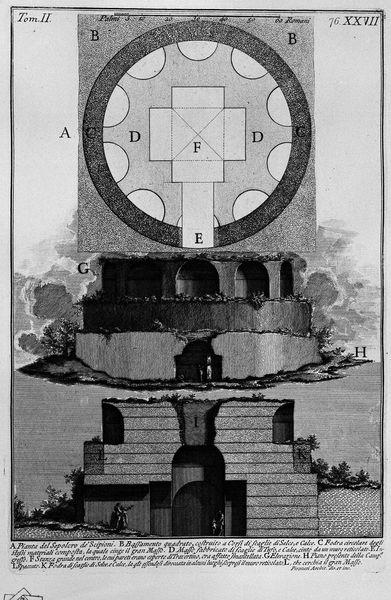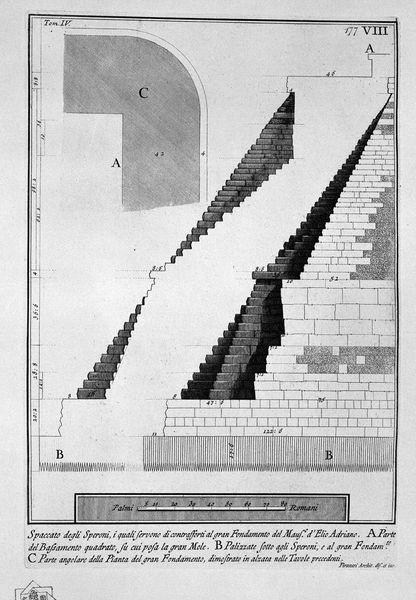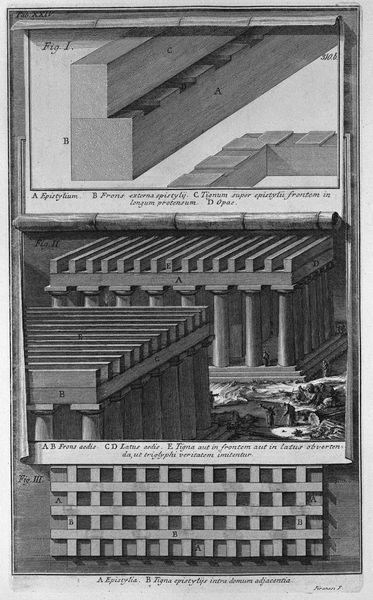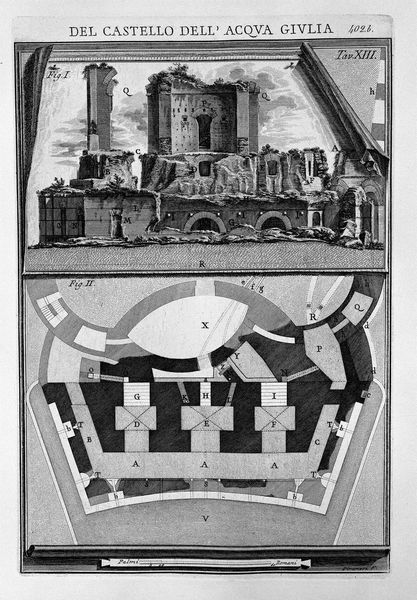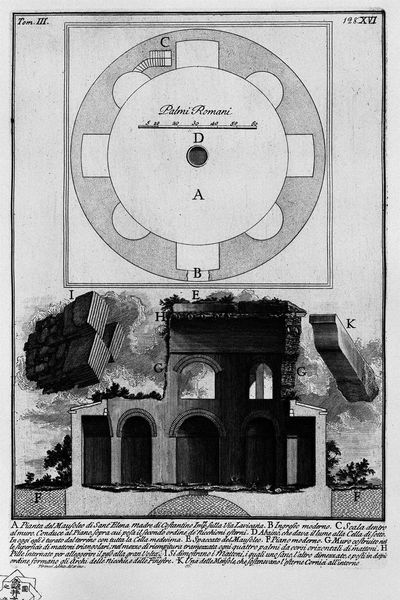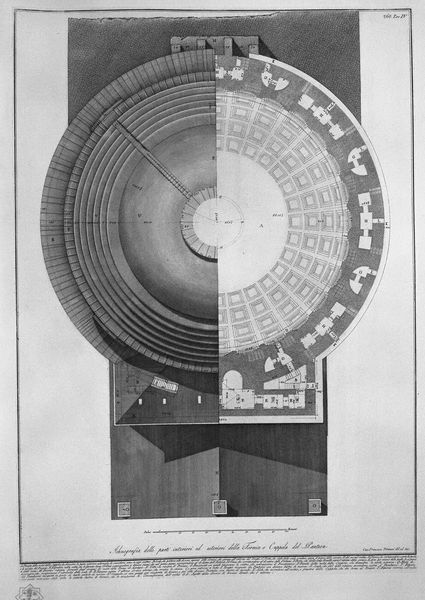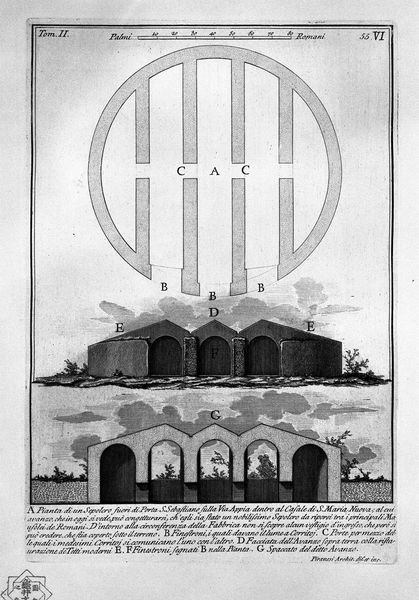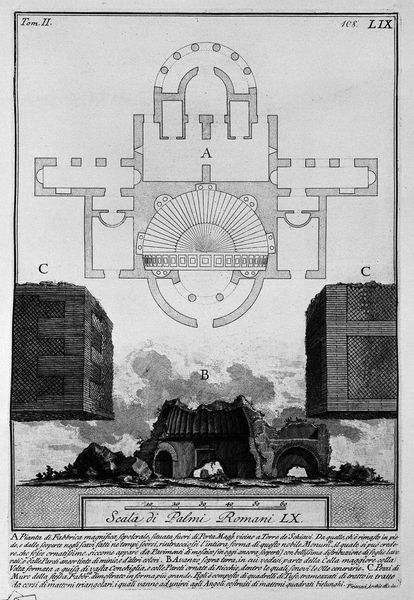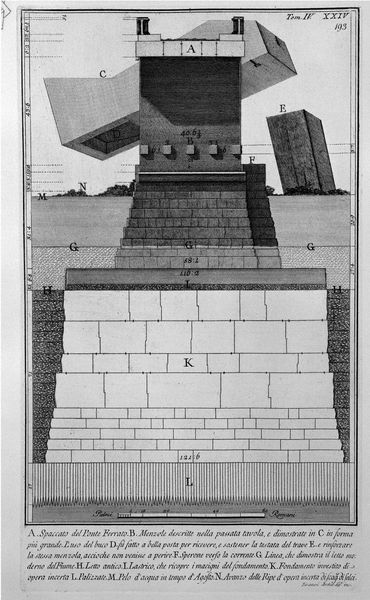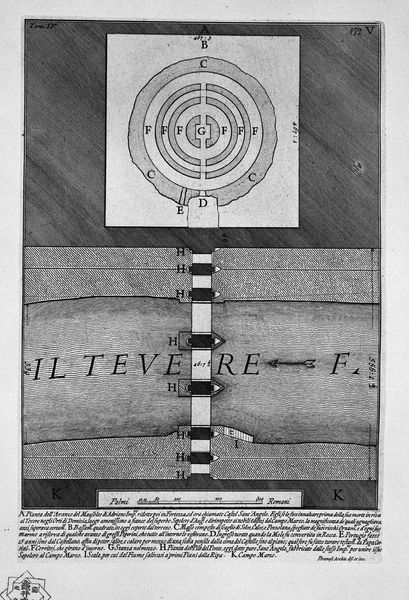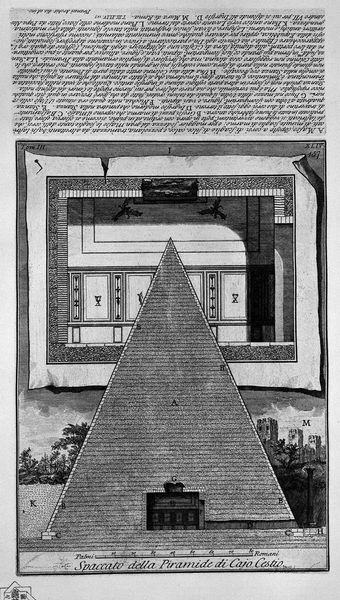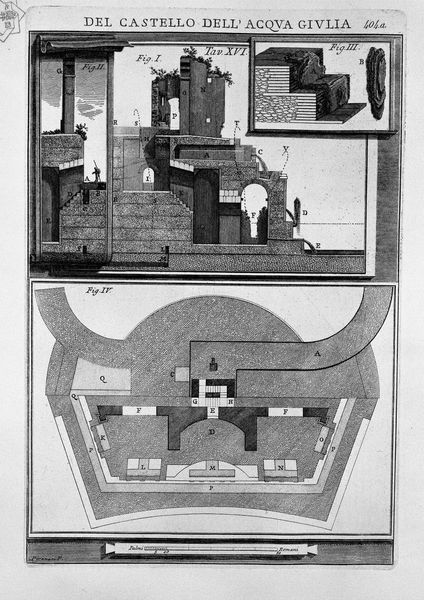
The Roman antiquities, t. 4, Plate XXXVIII. Vista of today`s surplus of the Theatre of Pompey.
0:00
0:00
drawing, print, etching
#
drawing
# print
#
etching
#
landscape
#
geometric
#
ancient-mediterranean
#
history-painting
Copyright: Public domain
This is Giovanni Battista Piranesi's etching of the Theatre of Pompey, showcasing the enduring allure of ancient Roman architecture. The plan of the theater, the 'cavea', immediately catches the eye. This semi-circular structure, a defining feature of Roman theaters, served as the seating area, with a clear hierarchy reflected in its layout. The placement of spectators, from the patricians closest to the stage to the plebeians higher up, mirrors the hierarchical structure of Roman society. The semi-circular form itself echoes through time. We see it mirrored in the design of amphitheaters, parliaments, and even modern sports arenas. This shape fosters a sense of collective experience, a shared space where spectacle and ritual unfold. Psychologically, the 'cavea' invokes a sense of immersion and unity. Its design encourages viewers to lose themselves in the collective experience, blurring the lines between individual and community. Even in ruins, the Theatre of Pompey speaks to the cyclical nature of history. Its architectural forms are not static relics of the past, but rather dynamic symbols that continue to resonate in our collective memory.
Comments
No comments
Be the first to comment and join the conversation on the ultimate creative platform.
